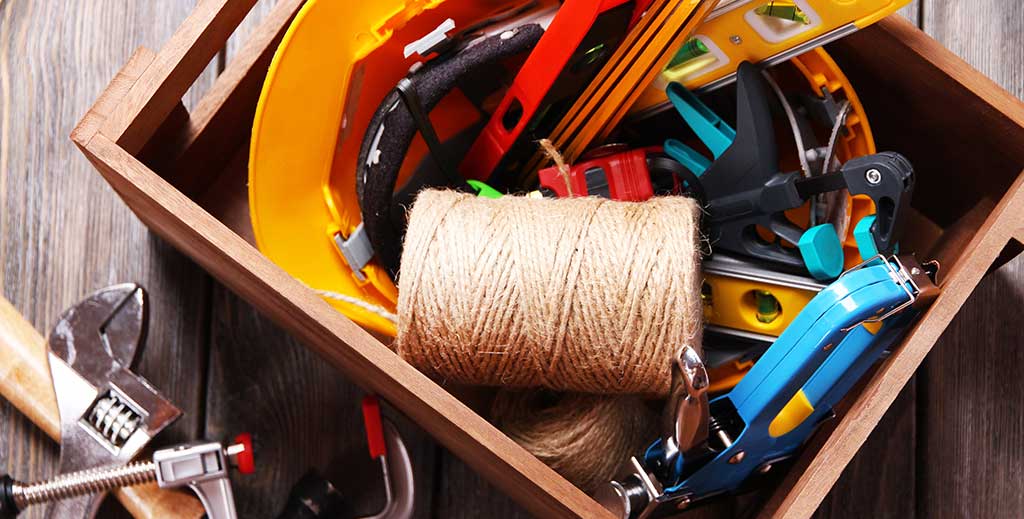Struck By Hazards
Struck-by hazards may result from vehicles, falling/flying objects or construction walls.
You are at risk from falling objects when you are beneath cranes, scaffolds, etc., or where overhead work is being performed.
There is a danger from flying objects when power tools, or activities like pushing, pulling, or prying, may cause objects to become airborne. Injuries can range from minor abrasions to concussions, blindness, or death.
The following accidents illustrate the danger of falling/flying objects and the importance of awareness and adequate protection.
An employee was standing under a suspended scaffold that was hoisting a workman and three sections of ladder. Sections of the ladder became unlashed and fell 50 feet, striking the employee in the skull.
The employee was not wearing any head protection and died from injuries received.
Two employees were using a wire rope to winch a wooden tool shed onto a flat- bed trailer. The wire rope broke, snapped back, and struck one of the employees in the top of the head, killing him.
The employee was not wearing a hard hat.
Workers were using a winch to pull a 10-foot section of a 600 lb. grain spout through a vent hole, when the spout became wedged.
Using pry bars, they attempted to free the spout, which was still under tension from the winch. When it popped free, the release of tension caused it to strike one of the workers in the head, who had no head protection.
A carpenter was attempting to anchor a plywood form in preparation for pouring a concrete wall, using a powder actuated tool. The nail passed through the hollow wall, traveled some 27 feet, and struck an apprentice in the head, killing him.
The tool operator had never been trained in the proper use of the tool, and none of the employees in the area, including the victim, were wearing personal protective equipment.
How Do I Avoid Hazards?
General:
- Wear hardhats.
- Stack materials to prevent sliding, falling, or collapse.
- Use protective measures such as toe-boards and debris nets.
Power Tools, Machines, etc.:
- Use safety glasses, goggles, face shields, etc., where machines or tools may cause flying particles.
- Inspect tools, such as saws and lathes, to ensure that protective guards are in good condition.
- Make sure you are trained in the proper operation of powder actuated tools.
Cranes and Hoists:
- Avoid working underneath loads being moved.
- Barricade hazard areas and post warning signs.
- Inspect cranes and hoists to see that all components, such as wire rope, lifting hooks, chains, etc., are in good
condition. - Do not exceed lifting capacity of cranes and hoists
Overhead Work:
- Secure tools and materials to prevent them from falling on people below.
- Barricade hazard areas and post warning signs.
- Use toe-boards, screens, or guardrails on scaffolds to prevent falling objects, or,
- Use debris nets, catch platforms, or canopies to catch or deflect falling objects.
Compressed Air:
- Reduce compressed air used for cleaning to 30 psi, and only use with appropriate guarding and protective equipment.
- Never clean clothing with compressed air.
The following accidents illustrate the struck-by hazards associated with mobile equipment.
A contractor was operating a backhoe when an employee attempted to walk between the swinging superstructure of the backhoe and a concrete wall.
As the employee approached from the operator’s blind side, the superstructure hit the victim, crushing him against the wall.
Employees had not been trained in safe work practices, and no barricades had been erected to prevent employee access to a hazardous area.
A safety “over travel” cable attached between the frame and the dump box of a dump truck caught on a protruding nut of an airbrake cylinder.
This prevented the dump box from being fully raised. The driver, apparently assuming that releasing the cable would allow the dump box to continue upward, reached over the frame and disengaged the cable with his right hand.
The dump box then dropped suddenly, crushing his head.
A worker was driving a front-end loader up a dirt ramp onto a lowboy trailer. The tractor was not centred and the tread slipped off the trailer.
When the tractor began to tip, the operator jumped from the cab. As he hit the ground, the tractor’s rollover protective structure fell on top of him, crushing him.
The tractor was not equipped with seatbelts.
How Do I Avoid Hazards?
- Wear seat belts that meet correct standard
- Check vehicles before each shift to assure that all parts and accessories are in safe operating condition
- Do not drive a vehicle in reverse gear with an obstructed rear view, unless it has an audible reverse alarm, or another worker signals that it is safe.
- Drive vehicles or equipment only on roadways or grades that are safely constructed and maintained.
- Make sure that you and all other personnel are in the clear before using dumping or lifting devices.
- Lower or block bulldozer and scraper blades, end-loader buckets, dump bodies, etc., when not in use, and leave all controls in neutral position.
- Set parking brakes when vehicles and equipment are parked, and chock the wheels if they are on an incline.
- All vehicles must have adequate braking systems and other safety devices
- Haulage vehicles that are loaded by cranes, power shovels, loaders etc., must have a cab shield or canopy that protects the driver from falling materials.
- Do not exceed a vehicle’s rated load or lift capacity.
- Do not carry personnel unless there is a safe place to ride.
- Use traffic signs, barricades or flaggers when construction takes place near public roadways.
- Avoid walking close to mobile equipment, especially heavy units, while in operation
“The difference between the impossible and the possible lies in a person’s determination” Tommy Lasorda
Thanks for the share, TO!



